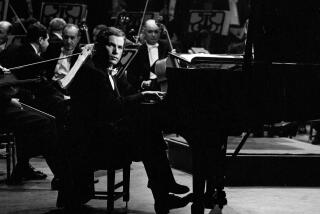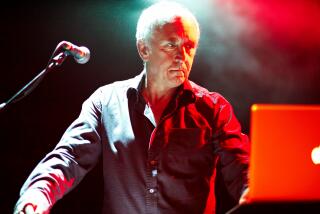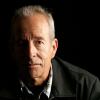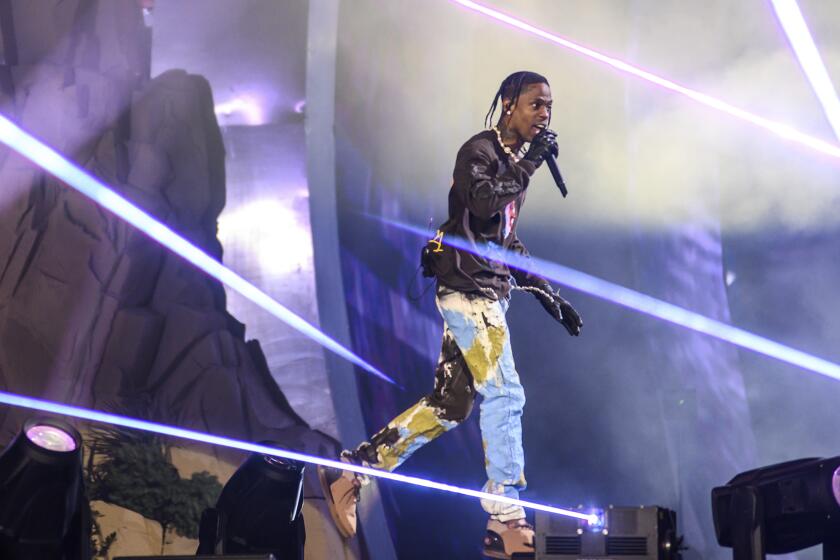The synth is back: KORG and Moog revive golden-era analog synthesizers
The word “vintage” has carried drastically different meanings within the world of musical instruments. In the realm of electric and acoustic guitars and amplifiers, “vintage” in recent years has translated into an important, and lucrative, facet of the business, as Fender, Gibson, Martin and numerous other guitar makers have enthusiastically churned out replica versions of time-honored vintage designs for history-minded players.
Among some innovation-obsessed mainstream pop producers and musicians, however, “vintage” has traditionally translated as “obsolete” because technological advancements continually brought forth newer, shinier and more jampacked equipment for those whose careers live or die by the music charts.
That perception is about to change in a big way at the 2015 National Assn. of Music Merchants convention that opens Thursday in Anaheim.
WATCH: Keith Richards try to play a Moog synthesizer in 1969
KORG USA, Moog Music Inc. and several other makers of electronic instruments are reviving designs from decades past, particularly several vintage synths that first appeared in the late 1960s and 1970s at the dawn of electronic music’s infiltration of mainstream pop consciousness.
KORG will unveil its modern-day re-creation of the ARP Odyssey analog synthesizer, an instrument introduced in 1972 and used prominently on tracks like Elton John’s “Rocket Man,” Manfred Mann’s Earth Band’s “Blinded by the Light,” the Edgar Winter Group’s “Frankenstein” and numerous other rock, pop, jazz, R&B and fusion recordings in the 1970s and ‘80s.
The original ARP Odyssey went out of production in 1981, around the time the Odyssey and other analog devices (like the iconic Moog synths) were supplanted by newer and fancier digital instruments favored by mainstream pop producers and audiences.
The value — musical, sentimental and monetary — of analog synthesizers, however, has been steadily growing since their premature demise in the early years of the Reagan administration.
“I see the Moog [analog] synthesizer as not just as a sound-making machine but as an event-making machine,” said Malcolm Cecil, a 78-year-old musician, composer, physicist, recording engineer and one of the world’s leading proponents of the modular analog synthesizer. Among his many other credits, Cecil and collaborator Robert Margouleff helped shepherd Stevie Wonder through his high watermark series of albums in the 1970s as associate producers of Wonder’s “Music of My Mind,” “Talking Book,” “Innervisions” and “Fulfillingness First Finale” albums.
Because these early synthesizers employ analog circuits and controls, “it’s an infinite process — a fascinating and endless and marvelous process,” said Cecil, who will be at NAMM on Saturday and Sunday to demonstrate one of three modular synthesizers Moog is bringing back into production. Digital technology made many aspects of making music with synthesizers more convenient but, a growing crowd of analog enthusiasts say, at the expense of the unlimited flexibility of analog instruments.
In the late ‘60s and ‘70s, rock and pop musicians embraced synthesizers in a big way as the parameters of mainstream genres exploded in all directions and engulfed instruments and techniques previously only explored only by avant-garde experimentalists.
Ironically, the band widely credited with the first use of a synth on a recording by a major rock group was the Monkees, which used a Moog synthesizer on two tracks on their 1967 album, “Pisces, Capricorn, Aquarius and Jones, Ltd.” It was Mickey Dolenz, not the ostensibly more sophisticated Mike Nesmith, who pushed the Pre-Fab Four in that direction. “It was actually a pretty difficult thing to use,” Dolenz told The Times in 2009. “I threw a party for John Lennon one night, and he sat there at the Moog for four hours making flying saucer sounds. It was great for flying saucer sounds.”
Soon the Beatles, the Rolling Stones and other boundary-pushing artists started experimenting with them. The Who’s Pete Townshend famously took the instruments into uncharted new lands during the “Lifehouse”/”Who’s Next” era, getting the sound of ARP synths and other analog machines onto pop radio (and later crime-procedural soundtracks) with “Won’t Get Fooled Again” and “Baba O’Riley.” Analog synthesizers became a crucial element for the ‘70s progressive rock movement.
Last year Moog produced a limited-edition replica version of the synthesizer that Keith Emerson played in the 1970s with Emerson Lake & Palmer, down to replicating the stickers he adorned his instrument with. The model reportedly was priced in the six-figure range. It’s akin to the blue-chip Eric Clapton, Stevie Ray Vaughan and Jimmy Page replica guitars that custom shops for Fender and Gibson have crafted for well-heeled guitar aficionados.
Additionally, Yamaha, another of the 5,000 brands slated to exhibit at the annual gathering of the global music-products trade show, is exhibiting several vintage models from its instrument archives in conjunction with the 40th anniversary of the company’s introduction of its first synthesizer — the SY-1 — in 1974. Other instrument makers also will be bringing out new analog models to meet the perceived demand.
“Pop culture is shifting toward the nerds and geeks who know how to really immerse themselves in this kind of analog equipment that is tactile, customizable, creative and above all totally inspirational,” William Mathewson of William Mathewson Devices told The Times by email. William Mathewson Devices will be exhibiting 20 emerging modular analog synthesizer brands.
Some of these “nerds and geeks” are actually pretty popular and influential both in pop and underground music. The intricacies of analog sound as deployed by acts as big as Daft Punk or as indie as Xeno and Oaklander are endlessly debated in online forums like vintagesynth.com. There’s also an ongoing cult of heritage-synth acts like Gary Numan that draws substantial crowds of fans in local industrial and EBM clubs and parties such as Complex and Das Bunker.
The renewed interest in analog technology isn’t simply about nostalgia for the tools of the trade of a bygone era. Instead, they’re finding renewed favor among musicians and experimentalists who believe their true potential was never fully explored before digital came along.
Synth designer and musician Tom Oberheim, who helped develop MIDI technology, went back into business four years ago and is exhibiting his latest creations at NAMM for the first time in a decade.
“There is a warmth to analog, an organic quality that captures the imagination,” Oberheim said in a statement. “It’s sort of like the recent affection for turntables and LPs versus CDs or MP3s.”
In a video Moog created in conjunction with the introduction of its new analog modular synths, five-time Grammy-nominated composer and electronic music enthusiast Suzanne Ciani said, “We always thought of technology as this linear progression, and we were always, because it was new, looking for the next thing and going forward, and you’d wake up every day and it would change.
“Now I think we have a depth of experience and history,” Ciani added. “People are starting to look at the root system of the whole phenomenon, and people are saying, ‘I want to get my hands on that early experience that was so exciting.’”
Herb Deutsch, co-inventor (with revered synth forefather Robert Moog) of the Moog Modular Synthesizer, might be accused of playing favorites when he argues that his instrument “went out of production far too soon.” Yet, he explained, “it went out of production at a time when people thought — not knowing what the potential of those instruments could be — that it would be much easier for them to go around with a keyboard that they could carry under their arms.”
The digital technology of the 1980s made keyboard synthesizers more portable than some of the massive analog instruments that preceded them, which often were stacked 2 and 3 feet high and spread out 4, 5 and 6 feet or more atop tables looking like an ancient telephone switchboard. They also were comparatively easier to program, with preset push buttons replacing the hand-wired connections, analog knobs and dials that were a hallmark of early analog synths. But, the analog enthusiasts argue, something may have been lost, or at least laid aside, in the rush to embrace convenience.
“When push-button stuff came along, and MIDI came along, and they could just push a button and get exactly the same sound every time, that’s where they went because instant gratification is the name of the game,” Cecil said. “With the modular, you make your sounds different every day. And that’s the beauty of it. I’m a jazz player, and I can play the same songs with the same musicians every week when I play gigs, but they never sound the same twice.”
In the words of L.A. musician M. Geddes Gengras, hovering over one of the brand new, vintage-inspired Moog modular synths, “I know that I could spend years with this thing and never run out of sounds.”
------------
FOR THE RECORD
Jan. 23, 1:30 p.m.: An earlier version of this article incorrectly attributed the following quote to Brooklyn producer Max Ravitz: “I know that I could spend years with this thing and never run out of sounds.”
------------
Twitter: @RandyLewis2
--------------------------------
What do they sound like?
ARP Odyssey
“Rocket Man”
Elton John
“Blinded by the Light”
Manfred Mann’s Earth Band
“Chameleon”
Herbie Hancock
“Frankenstein”
The Edgar Winter Group
“Undertow”
and “Leave”
R.E.M.
“Dr. Who” theme
(1980-81 season)
Peter Howell
Moog Modular Synthesizer
“Daily Nightly”
and “Star Collector”
The Monkees
“Strange Days”
The Doors
“Here Comes the Sun”
and “I Want You (She’s
so Heavy)”
The Beatles
“Lucky Man”
Emerson, Lake & Palmer
“Living for the City”
Stevie Wonder
“I Feel Love”
Donna Summer
More to Read
The biggest entertainment stories
Get our big stories about Hollywood, film, television, music, arts, culture and more right in your inbox as soon as they publish.
You may occasionally receive promotional content from the Los Angeles Times.







